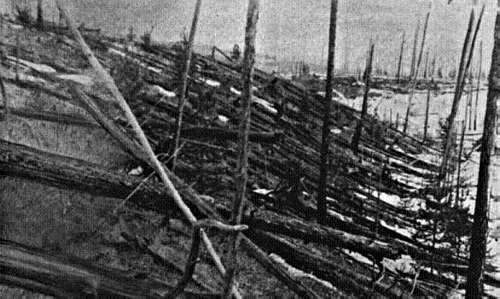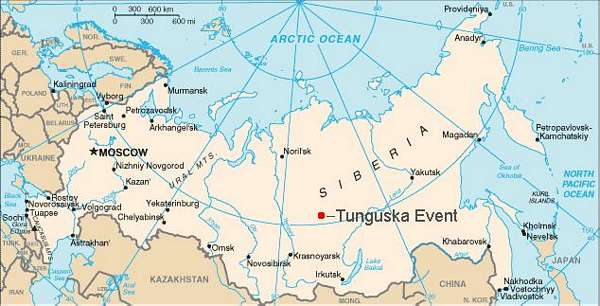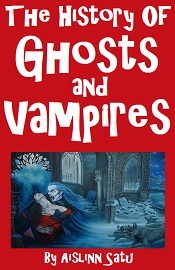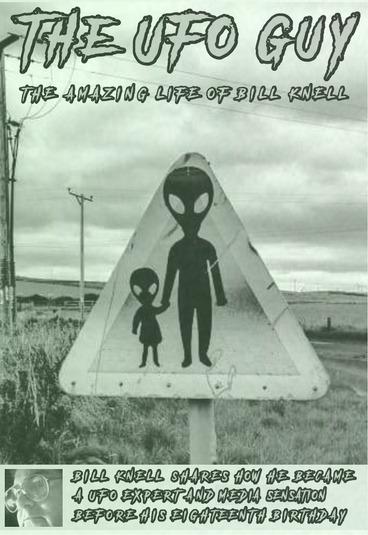|

By most accounts the huge blast that flattened 500,000 acres of pine forest in what is known as the Tunguska (River) region of Central Siberia occurred on June 30, 1908. One hundred years later, we still do not know what caused it. Theories abound, but answers have been few. Ironically, the explanation that might make the most sense also is one least likely to be believed by anyone.
Despite years of searching for material from what was assumed to be a meteor impact, no convincing evidence has been found to support that assumption. Likewise, there are problems with the airburst theory which some say involved a meteorite, piece of a comet, unknown bit of extraterrestrial material or even an alien spacecraft. A lack of physical evidence to support these speculations makes it impossible to conclude that something exploded above the area and caused all the damage.

New opinions based on current scientific knowledge say that the blast was caused by a black hole passing through the earth or the explosion of an antimatter meteorite. The mini-black hole theory was first proposed in 1973, but was refuted after no anomalous air wave measurements were detected from the predicted exit point of the alleged black hole. The anti-matter meteorite explosion explanation arrived in 1965, but faded after radiocarbon levels in trees showed no sign of increase. Higher levels would have supported that theory. Apart from what we don’t know, let’s look at what we do know. Some time after seven o’clock in the morning indigenous people of Central Siberia and Russian Settlers told authorities that they observed a very bright bluish light moving rapidly across the sky. Minutes later they described seeing a bright flash and hearing a very loud sound similar to artillery fire. A shockwave followed the sound and gave witnesses the impression that an earthquake occurred simultaneously. Although there were no uniform measuring systems for earthquakes or tremors in those days, seismic stations across Asia and parts of Europe indicated readings which would have labeled the seismic activity as 5.0 on the Richter scale today. Atmospheric pressure fluctuations were detected in areas as far from Siberia as Great Britain. The skies over the Tunguska region glowed for weeks because there was so much dust from the blast suspended in the stratosphere. A number of scientific experts visited the area, but none that we know of arrived there until at least ten years after the blast due to the isolated location. When a Soviet expedition arrived there in 1927, they discovered evidence that something strange and unknown occurred. Apart from the fact that there was no impact crater from what everyone assumed was a meteorite strike, expedition members reported that there was an area of scorched trees that measured thirty miles wide. Near what was assumed to be the primary blast point, some trees were still standing.

The trees that survived the blast were scorched in a manner which indicated that the energy may have proceeded out from ground zero and gained momentum. However, the trees that didn’t survive were flattened in directions that did not follow what would have been the expected path of the shockwave. That could mean that the energy proceeding from Tunguska’s ground zero may have spread out in a circular manner instead of following the shockwave pattern. Three later expeditions to Tunguska revealed more surprises. With absolutely no sign of any type of impact crater, aerial photos were taken. The photos revealed that trees had been flattened in a butterfly pattern. A number of children born to survivors of the Tunguska blast had birth defects consistent with mutations caused by exposure to radiation, especially those born to members of the Evenki Tribe of indigenous people. The mutations actually follow the path of the shockwave and are found in people, pine trees and animals. Microscopic silicate and magnetite spheres were found in the soil leading some to believe that the explosion of a meteorite or other extraterrestrial object occurred above ground. However, others say that the spheres were formed by materials already present or from previous meteorite strikes believed to have occurred in the region. These spheres may have been created or further affected by whatever energy was released during the 1908 event. Whatever occurred in June of 1908 released energy two thousand times greater than the force of the atomic bomb that exploded over Hiroshima. After careful consideration of all the possibilities, I believe that what occurred in 1908 involved a directed energy beam or weapon. Although I will be the fist to admit that there are problems with that theory as well, most of the problems come from the fact that we simply do not understand very much about the nature of such a beam or weapon. One person that had the knowledge, skill and technology to produce such a blast in 1908 was Nicola Tesla. Tesla once worked for Thomas Edison, but the two became lifelong competitors and enemies after Tesla cast dispersions on Edison’s expensive, cumbersome and overrated Direct Current power distribution system. Instead, Tesla pioneered what became our modern Alternating Current power system. Furious, Edison used his friends and press connections to paint Tesla as a Mad Scientist. The tag stuck and he was misunderstood and belittled for most of the rest of his life. Time has proven that Nicola Tesla was a genius that came up with ideas that were far ahead of his time. He once said, “The present is theirs; the future, for which I really work, is mine." Before the invention of wireless transmissions or radio, Tesla had already invented a wireless-controlled ship, submarine and torpedo. But it was his work with the wireless transmission of power that interests most people. He had a vision of transmitting power like radio waves so that anyone in the world could have all they needed at no charge. First conceived as a kind of blanket plan simply transmitting power out everywhere, Tesla saw the need to direct it where it was needed. This, many believe, lead to his development of transmitted and directed energy beams and weapons. The most famous became his alleged Death Ray. Nicola based his death ray on the development of a button lamp that he first invented in 1893 and his replication and improvement of work previous began by William Roentgen, discoverer of X-rays. Without going into a great deal of details, Tesla found a way to use the basic design of his button lamp to create a laser beam. He also saw the need and found a way to create and direct particle beam energy to specific points in order to maintain the power of such energy and focus the beams on specific targets. Nicola gave us an idea of the potential use of his so-called Death Ray in a 1937 interview published in the New York Times. He said that his weapon “will send concentrated beams of particles through the free air, of such tremendous energy that they will bring down a fleet of 10,000 enemy airplanes at a distance of 250 miles from the defending nation"s border and will cause armies of millions to drop dead in their tracks.” While it would be hard to prove that Tesla was responsible for the Tunguska Blast, there is some evidence to support the idea that someone may have used a directed energy weapon to cause the central Siberian explosion. After the French ship Iena blew up without explanation in 1907, some blamed Tesla claiming that his work on radio-controlled torpedoes or transmitted energy was responsible. These included Lee De Forest, inventor of the Audion vacuum tube. By 1908, there were several inventors that claimed the ability to use energy weapons to destroy targets miles away. Tesla was the only one that may have possessed the knowledge and equipment to actually cause such a devastating blast so far away. He may have chosen the area for its remoteness, limited population and distance to test the strength of his equipment. The real question is if such technologies exist, why play around with atomic and nuclear bombs, chemical weapons and computer viruses. The answer may be that the idea died with its father. Although others may have had some limited success with directed energy weapons, Tesla probably understood them better than anyone else and held the key to make them work on a global scale. When the U.S. Government seemed disinterested in his ideas, he packed them up forever in his mind. It’s important to understand that between World War One and Two, companies owned or established by Edison did a lot of development work for the U.S. Government. Part of this work involved the important new technology of radar. Although Edison died in 1931, the companies established by him continued to justify his reputation of producing technologies that could be developed and deployed in a reasonable amount of time to desired specifications. Despite his genius, Tesla’s inventions always seemed to be a work in progress that constantly underwent changes and improvements. It’s possible the government feared that involvement with Tesla on a project like the death ray would mean a never-ending series of delays, passed target dates and dead ends. The possibility that what he was working on could morph into something completely different, undesirable and over-budget was also something that may have concerned them. If blaming Tesla for the 1908 Tunguska blast is a tough pill to swallow, try considering the theory that intelligent beings from the outer space or the future may have been responsible. If we have learned anything about the Tunguska event during the past one hundred years, it’s that contemporary technologies, theories and explanations just do not fit. As Sir Arthur Conan Doyle stated through his fictional character, Sherlock Holmes, “…when you have eliminated the impossible, whatever remains, however improbable, must be the truth…”
Book Titles We Highly Recommend - Informative and Fascinating - Helps To Support This Website
more Titles We Highly Recommend

|










